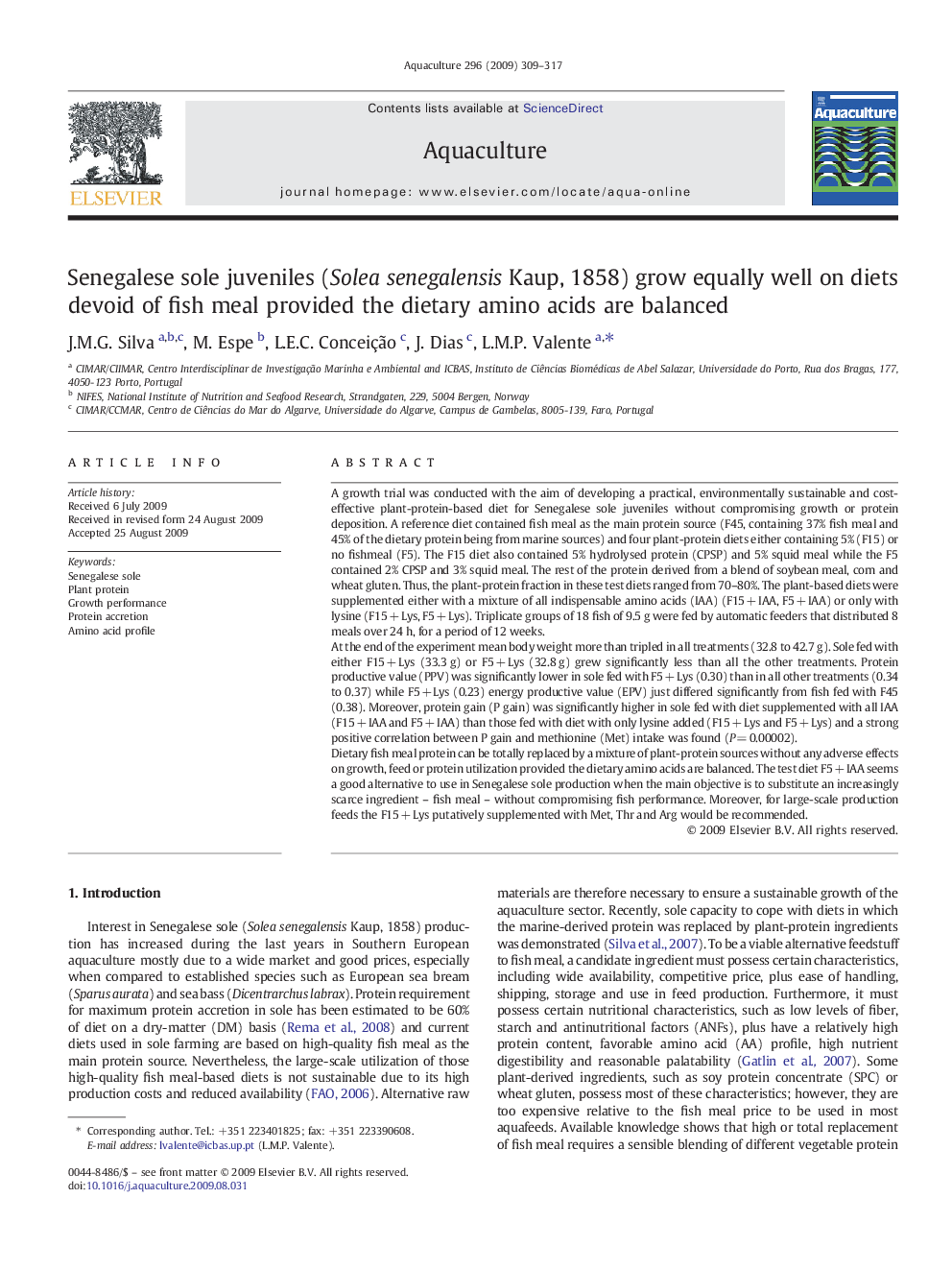| Article ID | Journal | Published Year | Pages | File Type |
|---|---|---|---|---|
| 2423862 | Aquaculture | 2009 | 9 Pages |
A growth trial was conducted with the aim of developing a practical, environmentally sustainable and cost-effective plant-protein-based diet for Senegalese sole juveniles without compromising growth or protein deposition. A reference diet contained fish meal as the main protein source (F45, containing 37% fish meal and 45% of the dietary protein being from marine sources) and four plant-protein diets either containing 5% (F15) or no fishmeal (F5). The F15 diet also contained 5% hydrolysed protein (CPSP) and 5% squid meal while the F5 contained 2% CPSP and 3% squid meal. The rest of the protein derived from a blend of soybean meal, corn and wheat gluten. Thus, the plant-protein fraction in these test diets ranged from 70–80%. The plant-based diets were supplemented either with a mixture of all indispensable amino acids (IAA) (F15 + IAA, F5 + IAA) or only with lysine (F15 + Lys, F5 + Lys). Triplicate groups of 18 fish of 9.5 g were fed by automatic feeders that distributed 8 meals over 24 h, for a period of 12 weeks.At the end of the experiment mean body weight more than tripled in all treatments (32.8 to 42.7 g). Sole fed with either F15 + Lys (33.3 g) or F5 + Lys (32.8 g) grew significantly less than all the other treatments. Protein productive value (PPV) was significantly lower in sole fed with F5 + Lys (0.30) than in all other treatments (0.34 to 0.37) while F5 + Lys (0.23) energy productive value (EPV) just differed significantly from fish fed with F45 (0.38). Moreover, protein gain (P gain) was significantly higher in sole fed with diet supplemented with all IAA (F15 + IAA and F5 + IAA) than those fed with diet with only lysine added (F15 + Lys and F5 + Lys) and a strong positive correlation between P gain and methionine (Met) intake was found (P = 0.00002).Dietary fish meal protein can be totally replaced by a mixture of plant-protein sources without any adverse effects on growth, feed or protein utilization provided the dietary amino acids are balanced. The test diet F5 + IAA seems a good alternative to use in Senegalese sole production when the main objective is to substitute an increasingly scarce ingredient – fish meal – without compromising fish performance. Moreover, for large-scale production feeds the F15 + Lys putatively supplemented with Met, Thr and Arg would be recommended.
